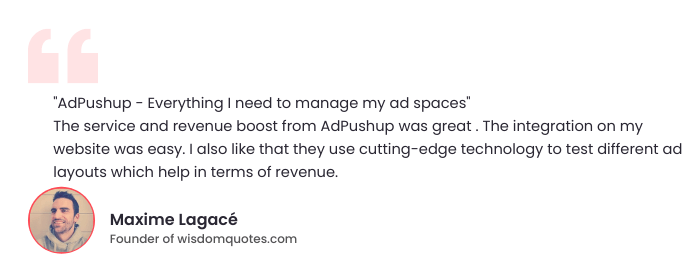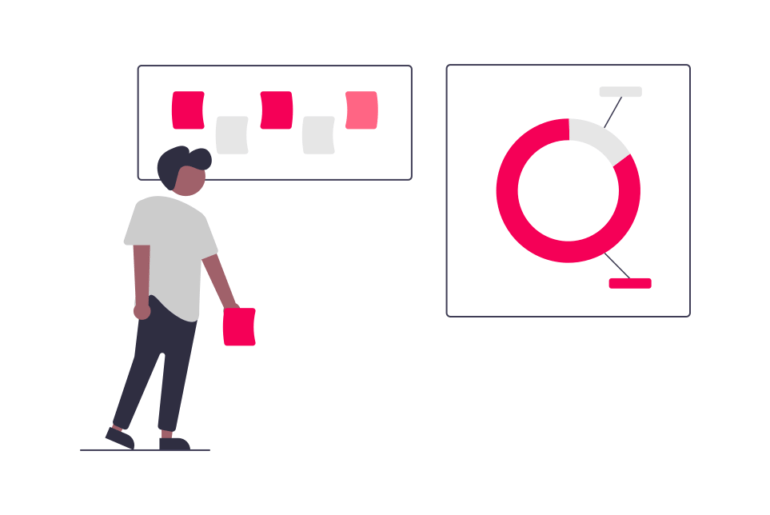Wondering how to evaluate a Demand Side Platform (DSP)? Here are some key factors to consider, from pricing models and data capabilities to ad quality and customer support.
Working hand in hand with SSPs (Supply Side Platforms) are the demand-side platforms aka DSP. The demand side platform facilitates advertisers to place ad creatives, bagging mass audience coverage, brand recognition, and attracting maximum RoI.
According to recent projections, DSP market is estimated to grow at a rate of 23.7% compound annual growth rate (CAGR) in the forecast period between 2022 and 2029. Meaning, more and more are using demand-side platforms.
What is a Demand-Side Platform?
Demand side platforms are, in simple words, programming platforms that allow real-time bidding for ad space from the websites of a wide range of publishers.
Contrary to traditional negotiations for ad buying, which require both parties ( advertisers and publishers) to be physically present, DSP provides quick, efficient marketing of ads, incorporating real-time bidding.
DSP is specifically designed for advertisers to make their advertising campaigns successful.
Read more:
What is a Demand-Side Platform (DSP)?
An Introduction to Supply Side Platforms
How to Asses the Value of a Demand-Side Platform
As efficient and beneficial as it sounds, a few aspects need to be considered to assess the value of a DSP:
- Access to Integrated inventory
With Massive audience coverage, DSPs can be assessed on the parameters of their access to diverse ad inventories. Contrary to the belief of all DSPs access homogeneous inventory, the difference lies in the availability of channel environments and channel focus.
Usually, DSPs focus on desktop displays.
However, the target audience can be reached through mobile ad inventory such as through videos. Since each impression (IMPR) incurs a huge cost to be placed on channels, DSP tends to focus on one channel only.
Channel environment, that is, where advertisers wish to target audiences ( desktop, mobile) is another criteria on which DSPs are evaluated.
Read more:
DSP vs DMP: Differences, Similarities, and Their Hybrid Model
What is a Supply-Side Platform?
2. Presence of intermediary
Since DSP is a programming advertising platform, technological resources play a great role. Offering technology designed in-house and from scratch eliminates the intrusion of any intermediary or middleman that are likely to add up to the cost.

3. Availability of servers
It would be wasteful to not have networks or servers at the locations where bidding is supposed to take place. Thus, DSPs caliber can be evaluated on the basis of the quantity and location of the server.
For instance, if the target audience is to be reached in Mexico then a server needs to be operated from Mexico as well.
4. Scale
Another unique feature of demand-side platforms is Scale, which is defined as its ability to reach mobile users, further referred to as QPS ( queries per second: ad to be served per second). Working parallel to QPS, it is integral for DSPs to have a variety of supply partners.
It is especially beneficial to optimize ad campaigns, and compare diverse ad formats from the ad Inventory of suppliers by giving access to it. DSPs with higher QPS result in the better observation of auction or bidding outcomes.
Read more:
Top 15 Supply Side Platforms (SSP) For Publishers in 2022
The Best SSPs (Supply-Side Platforms) for Web Publishers
5. Real-time Bidding in DSP
The majority of DSPs offer automated real-time bidding (RTB), allowing advertisers to purchase quality ad space, for the best possible ( of course, the lowest) price.
High scale is one aspect to consider.
However, despite having access to sophisticated ad formats, buying ad space at the wrong price is useless. Thus, smart bidding combined with High scale can create an ecosystem to sustain the business.
Pricing models
Bidding alone is insufficient. A DSP offering limited pricing options can put advertisers on the losing end. Therefore, taking various campaign objectives into account, a DSP with diverse pricing models is most beneficial.
For instance, advertisers with the objective to increase brand awareness must choose a DSP with CPM (cost per Mille or cost per thousand impressions) as their pricing option, given the ad is placed on a high-traffic website.
6. Supported ad creatives in DSP
The variety of ad formats supported by the DSP is another evaluation parameter. As an advertiser, the ad format requirements may vary according to the objectives. They can range from rich media ad units to Interstitial, native ads.
A DSP providing optimization of creatives is one that is beneficial for both publishers and advertisers. As per the trends, video support is in demand, however, it requires special technology, especially for mobiles. This poses an important question whether the preferred DSP has relevant technology to cater to diverse channel environments?
Read more:
What SSPs and Ad Networks Want from Publishers’ Ad Inventory
How To Find The Right Video SSP For Your Inventory
7. Protection of data by DSP
Programming advertising is fraught with certain risks pertaining to data privacy. Yet, it is pertinent to choose the demand-side platform that ensures the safety of the brand, and data and prevents ad fraud.
Ad fraud-
‘An unfortunate reality of DSP’
Although, fraudulent ad impressions can not be put to rest, yet confident DSPs can take certain measures to combat ad fraud through manual checks and technical monitoring. It is also to be noted that not all DSPs are ready to take the risk as the performance is borne by them.
- Whether the chosen demand side platform ensures that ads are presented on brand-appropriate sites is one of the criteria of evaluation.
- Does DSP ensure brand safety is another question one must ask to evaluate the right Demand-side platform? Although most demand-side platforms integrate third-party contextual vendors embellished with special analytical tools to eliminate the inappropriate subject matter that can put a brand name on line.
8. Support services provided by DSP:
While managing advert marketing, the support provided can earn DSP brownie points. It is important to consider if DSP has any service layer or if it is purely self-service. Whether a fee for training is charged if it is self-service?
Why are demand-side platforms important?
Demand-side platforms (DSPs) are important for a number of reasons.
- First, they allow advertisers to buy ad space in real-time, which means that they can respond quickly to changes in the marketplace.
- Second, a demand-side platform provides a way for advertisers to target specific audiences, which can result in more efficient ad spending.
- Third, demand-side platforms can provide detailed reporting on ad campaigns, which can help advertisers optimize their campaigns.
- Fourth, demand-side platforms can offer access to premium inventory, which can help advertisers reach their goals.
- Finally, DSPs can provide a variety of ad formats, which can help advertisers reach their target audiences in the most effective way. DSP for advertising can be great for you to reach certain marketing goals.
How Does a Demand-Side Platform (DSP) Work?

A demand-side platform (DSP) is a platform that allows advertisers to buy ad space in an automated fashion. DSPs are connected to ad exchanges, which are marketplaces where publishers sell ad inventory.
When an advertiser wants to buy ad space, they submit a bid to the DSP. The DSP then uses algorithms to determine which ad exchange to buy the ad space from and at what price. The DSP then serves the ad to the user.
Final words
The best way to evaluate the performance of DSP is to have detailed knowledge about the technology used, and the audience it targets further improving the platform for advertising agencies.
Being aware of DSP’s vision, and target market can be a great way of evaluation. To choose a high-performing DSP, the above-mentioned criteria are of utmost importance.
FAQs
Demand-side platforms (DSPs) allow advertisers to buy advertising through automation. DSPs are powerful marketing automation tools because they allow advertisers to buy high-quality traffic at scale with minimal friction.
Demand-side platforms are marketplaces where publishers list their advertising inventory on which advertisers can purchase mobile, search, and video ads. As opposed to Google Ads, these platforms allow advertisers to manage their advertising across multiple real-time bidding networks.
Yes, Google Ads are DSPs (Demand Side Platforms). However, there is one major difference between DSPs. In contrast to other DSPs, Google sells traffic exclusively from its own inventory.

Shubham is a digital marketer with rich experience working in the advertisement technology industry. He has vast experience in the programmatic industry, driving business strategy and scaling functions including but not limited to growth and marketing, Operations, process optimization, and Sales.








